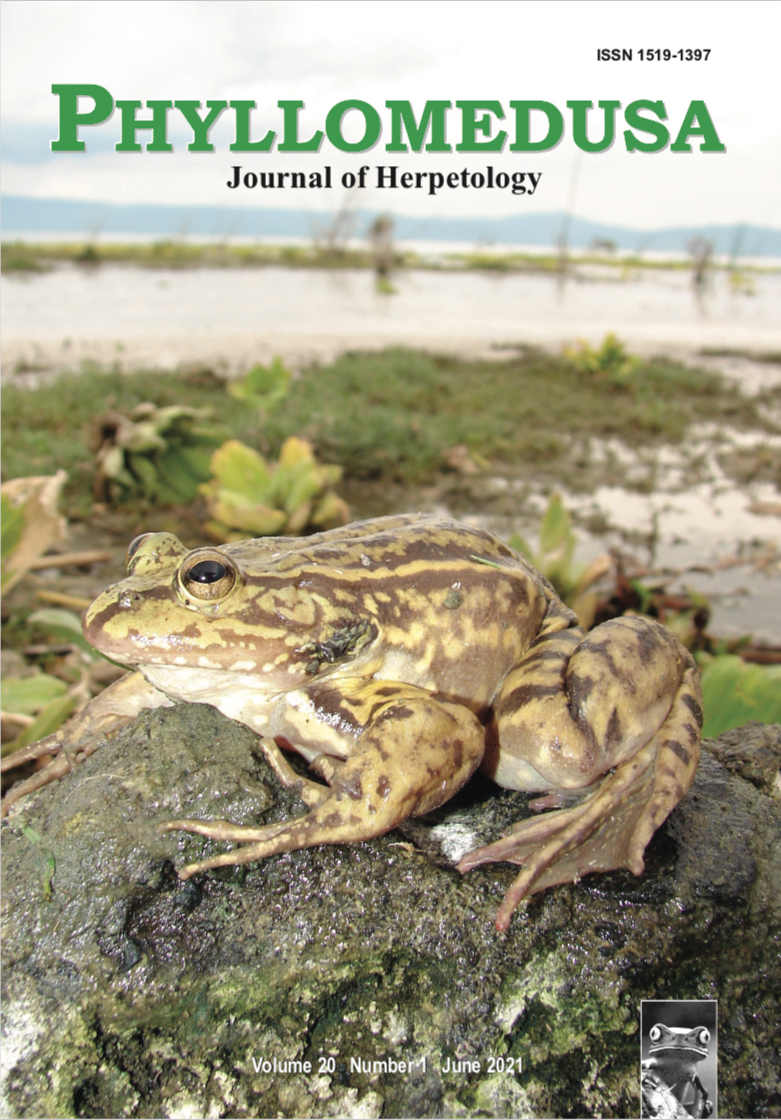Diet, reproductive biology, and ecological interactions of Fritziana goeldii (Anura: Hemiphractidae)
DOI:
https://doi.org/10.11606/issn.2316-9079.v20i1p37-52Keywords:
Egg-brooding tree frog, Food habits, Ostracods, Parasitism, Phoresy, South AmericaAbstract
Aspects of the diet, reproduction, and interactions with other taxa are reported for the egg-brooding tree frog, Fritziana goeldii, an endemic phytotelma-dwelling species from southeastern Brazil. A total of 56 frogs (48 males; 8 females) was collected between December 2018 and November 2019. A total of 218 dietary items, representing at least 28 taxa was recovered. Hymenoptera and Coleoptera were the most abundant, mainly early in the year (January–April), with Formicidae being the most represented group. Parasitic interactions with ostracods and helminths were observed in 12 and 13 frogs, respectively, with most of these organisms being found in the intestines of F. goeldii. Fritziana goeldii is sexually dimorphic, with females (mean 36.0 mm) being larger than males (mean 28.3 mm). All females collected had oocytes, and two also had eggs attached to the dorsum. No relation was found between the female’s size and size and number of oocytes. The reproduction of F. goeldii seems to be prolonged, with males calling throughout the year.
Downloads
Downloads
Published
Issue
Section
License
Copyright (c) 2021 ESALQ-USP

This work is licensed under a Creative Commons Attribution-NonCommercial-NoDerivatives 4.0 International License.
All material originally published in Phyllomedusa belongs to Escola Superior de Agricultura Luiz de Queiroz - Universidade de São Paulo. All contents are under a license of Creative Commons BY-NC-ND.


 Impact Factor (JCR): 0.600
Impact Factor (JCR): 0.600 CiteScore: 1.0
CiteScore: 1.0